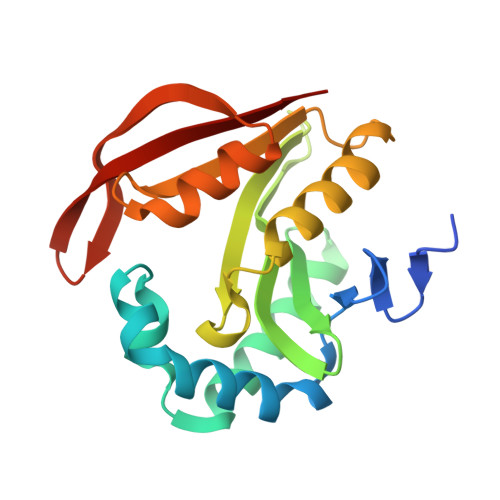Structural Basis for Microcin C7 Inactivation by the MccE Acetyltransferase.
Agarwal, V., Metlitskaya, A., Severinov, K., Nair, S.K.(2011) J Biol Chem 286: 21295-21303
- PubMed: 21507941
- DOI: https://doi.org/10.1074/jbc.M111.226282
- Primary Citation of Related Structures:
3R95, 3R96, 3R9E, 3R9F, 3R9G - PubMed Abstract:
The antibiotic microcin C7 (McC) acts as a bacteriocide by inhibiting aspartyl-tRNA synthetase and stalling the protein translation machinery. McC is synthesized as a heptapeptide-nucleotide conjugate, which is processed by cellular peptidases within target strains to yield the biologically active compound. As unwanted processing of intact McC can result in self-toxicity, producing strains utilize multiple mechanisms for autoimmunity against processed McC. We have shown previously that the mccE gene within the biosynthetic cluster can inactivate processed McC by acetylating the antibiotic. Here, we present the characterization of this acetylation mechanism through biochemical and structural biological studies of the MccE acetyltransferase domain (MccE(AcTase)). We have also determined five crystal structures of the MccE-acetyl-CoA complex with bound substrates, inhibitor, and reaction product. The structural data reveal an unexpected mode of substrate recognition through π-stacking interactions similar to those found in cap-binding proteins and nucleotidyltransferases. These studies provide a rationale for the observation that MccE(AcTase) can detoxify a range of aminoacylnucleotides, including those that are structurally distinct from microcin C7.
Organizational Affiliation:
Center for Biophysics and Computational Biology, University of Illinois at Urbana-Champaign, Urbana, Illinois 61801, USA.
















